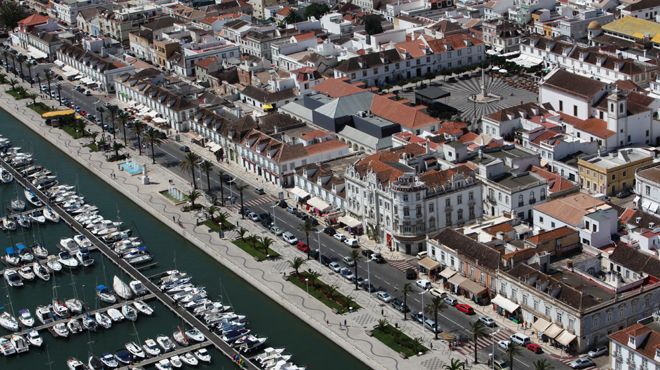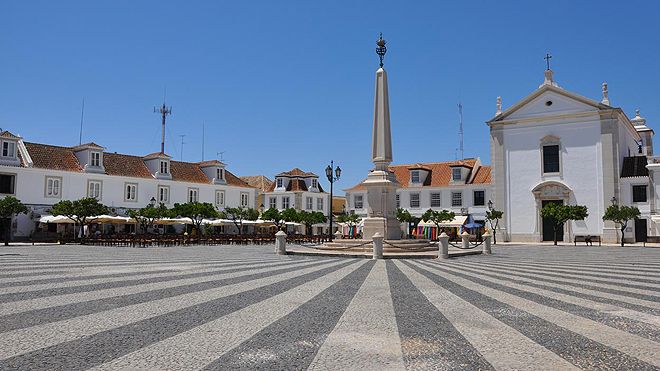Vila Real de Santo António

Vila Real de Santo António
Towns and Villages
In the sixteenth century, there existed a town known as Vila de Santo António de Arenilha, which was probably much closer to the sea. By the eighteenth century, this town had disappeared, having been engulfed by the sea and sand. It was, however, necessary to control the influx of goods up the river Guadiana, as well as to place the fishing business of Monte Gordo under royal supervision and stand firm against the Spanish, with whom Portugal had been at war in 1762/63.
The building of the town of Vila Real de Santo António, which brought evident economic and political advantages, was therefore more than just a mere royal whim.
The successful experiment of the reconstruction of Lisbon after the earthquake in 1755 was therefore repeated in Vila Real de Santo António. First of all, there was the careful grid-like planning of the urban structure, which was facilitated by the flat terrain on which the town was built. Next there was the adherence to rigid architectural units. And finally, there was the use made of pre-fabricated standard building blocks, such as the square-hewn stones that were brought from Lisbon, by boat, cut and shaped for immediate laying.
To appreciate the town planning that was followed in Vila Real de Santo António, you have to walk around the city's streets. Begin in Praça Marquês de Pombal, in the heart of the town, with its black and white cobblestones radiating from the central obelisk built in 1776. This square contains three of the major urban features commonly found in the eighteenth century: the church, the Town Hall and the old guardhouse. Afterwards, you should walk a few blocks and see the privately commissioned buildings, which nonetheless continue to adhere to an obvious architectural formula.
We suggest that you end your tour at the former Customs House, next to the gardens planted along the bank of the River Guadiana.
The building of the town of Vila Real de Santo António, which brought evident economic and political advantages, was therefore more than just a mere royal whim.
The successful experiment of the reconstruction of Lisbon after the earthquake in 1755 was therefore repeated in Vila Real de Santo António. First of all, there was the careful grid-like planning of the urban structure, which was facilitated by the flat terrain on which the town was built. Next there was the adherence to rigid architectural units. And finally, there was the use made of pre-fabricated standard building blocks, such as the square-hewn stones that were brought from Lisbon, by boat, cut and shaped for immediate laying.
To appreciate the town planning that was followed in Vila Real de Santo António, you have to walk around the city's streets. Begin in Praça Marquês de Pombal, in the heart of the town, with its black and white cobblestones radiating from the central obelisk built in 1776. This square contains three of the major urban features commonly found in the eighteenth century: the church, the Town Hall and the old guardhouse. Afterwards, you should walk a few blocks and see the privately commissioned buildings, which nonetheless continue to adhere to an obvious architectural formula.
We suggest that you end your tour at the former Customs House, next to the gardens planted along the bank of the River Guadiana.










 Explore
Explore 
 Remember and Share
Remember and Share 


